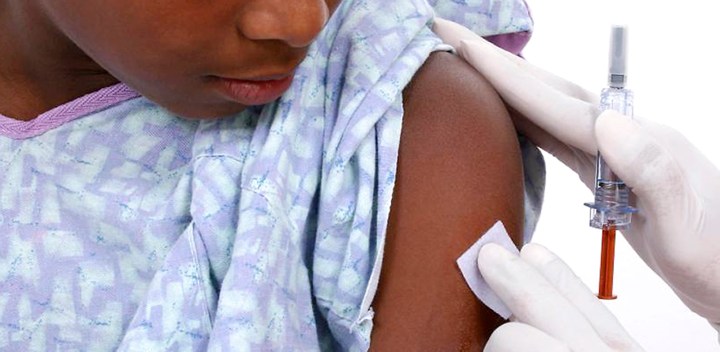SPOTLIGHT
For most children with TB, treatment time can be cut by a third

Tuberculosis treatment can be shortened from six to four months in 80% of children, according to findings from a landmark study.
“The SHINE trial is one of the largest paediatric trials conducted for TB, and these results are really great, especially at this point in time,” said Dr Eric Wobudeya, who presented the findings of the Stroke Hyperglycemia Insulin Network Effort (SHINE) trial at the virtual 51st Union World Conference on Lung Health on Saturday evening.
The study included more than 1,000 participants and looked at less severe forms of TB, which make up 80% of the disease burden in children.
“We have demonstrated that it is possible to conduct a randomised control study in children which is great… [and] incredibly important for the science world where children are often left out,” said Wobudeya, a paediatrician in Uganda – one of the countries in which the study was conducted.
Lagging behind adults
According to a 2018 article (setting out the reasoning for the SHINE study) published in the scientific journal Trials, studies of anti-tuberculosis treatment in children historically have lagged substantially behind adult studies and “evidence for tuberculosis treatment in children is largely extrapolated from adult studies”.
Some of the reasons for this, noted the authors, are that children are difficult to diagnose and are thought to pose little risk in terms of onward transmission.
“TB studies in children have long been neglected owing to the perception that paediatric TB is not a public health priority,” noted the authors. However, the result is that there is little data on ideal drug dosing, not to mention a customised regimen – which is what this recent data represents.
This is despite the fact that 1.2 million children fell ill with TB in 2019, according to the World Health Organisation’s Global Tuberculosis Report 2020. More than 200,000 children die each year from TB, mostly in South-East Asia and Africa. In Africa, 30% of all TB cases are in children, according to the United Kingdom’s Medical Research Council Clinical Trials Unit (MRC CTU).
Current treatment taken for shorter period
As described in a statement from the WHO’s Global TB Programme: “The SHINE trial is a phase 3 randomised open-label trial comparing four versus six months of treatment with rifampicin, isoniazid, pyrazinamide plus or minus ethambutol in children with smear-negative, non-severe TB. The trial was conducted in five study sites in South Africa, Uganda, Zambia and India involving 1,204 children aged under 16, including 127 children living with HIV infection. Minimal TB was defined as TB which is both sputum smear-negative and non-severe, including extra-thoracic lymph node TB and non-severe respiratory TB (as determined on chest X-ray).”
The children were randomised to receive either six months or four months of treatment, with the continuation phase of treatment shortened from four to two months in the four-month arm. They were then followed up for 18 months.
“The key finding was that four months of treatment was non-inferior to the standard six-month treatment. There was no statistically significant difference when comparing the six months and four months groups in terms of the proportion with an unfavourable outcome (treatment failure, TB recurrence, death of any cause, and loss-to-follow-up). Side-effects related to treatment were few, and similar across both groups,” read the statement.
“The SHINE results are really exciting because the four-month regimen is something that programmes could move to implement right away,” said Lindsay McKenna of the US advocacy organisation Treatment Action Group (TAG).
“Programmes should already have access to the tools they need to determine minimal or non-severe TB and to treat according to the four-month regimen, as the medicines and formulations for the four-month regimen are exactly the same as those already in use for the six-month standard of care, you just finish the continuation phase of treatment two months earlier,” she said.
Days before this announcement, Spotlight reported on results of a study showing that a new four-month regimen for adults is just as effective at curing TB when compared with the standard six-month treatment. However, this study used two newer drugs (rifapentine and moxifloxacin) in the four-month regimen. This new adult regimen has not yet been tested in children under 12.
A first for children
“Until now, no randomised controlled trials have been carried out to look at the duration of treatment required for children with non-severe, smear-negative TB. The current recommendation that they receive six months of treatment is based on the approach used in adults.
“Although the implementation of standard regimens for both adults and children is attractive for programmes, the needs of children with TB also need to be considered as they make up a substantial proportion of people living with TB,” noted the MRC CTU in a SHINE information brief.
According to this brief, administering medicines to children can be “challenging, particularly if the formulation is unpalatable to the child”.
“Even where child-friendly fixed-dose combination formulations are used, with simplified dosing and dispersible tablets, caregivers may still face difficulties giving children their medicines. Social science work carried out within SHINE found that some caregivers had to adjust their daily schedule to incorporate sufficient time for giving medicine, and resort to strategies such as restraining or incentivising children. Reducing treatment length for children with minimal TB could really help,” it explained.
“Reducing children’s treatment by two months could make treatment easier for children and caregivers, as well as reducing costs to patients and the health system.” DM/MC
*This article was produced by Spotlight – health journalism in the public interest. Sign up for our newsletter.



















 Become an Insider
Become an Insider
Comments - Please login in order to comment.